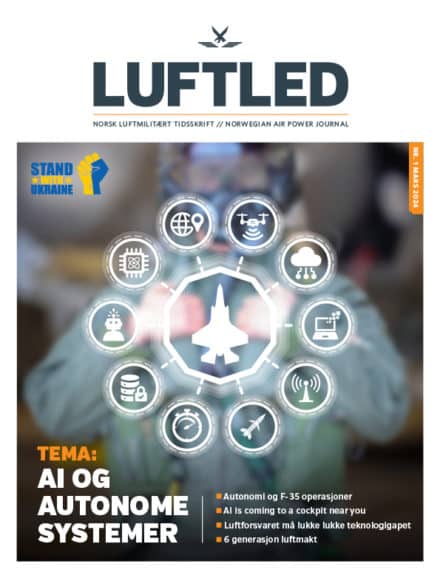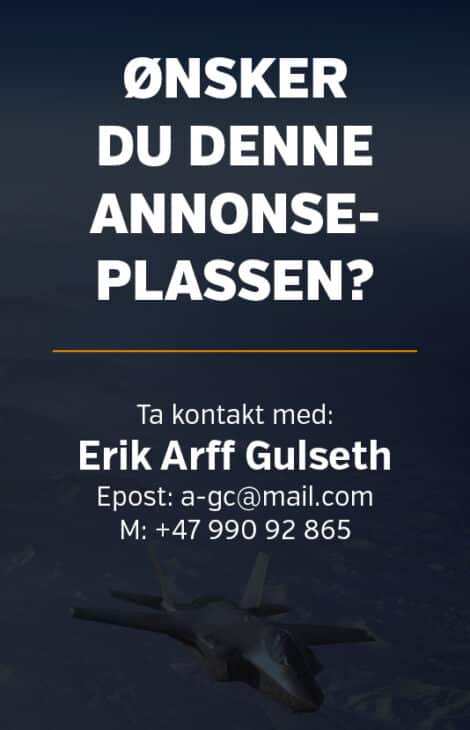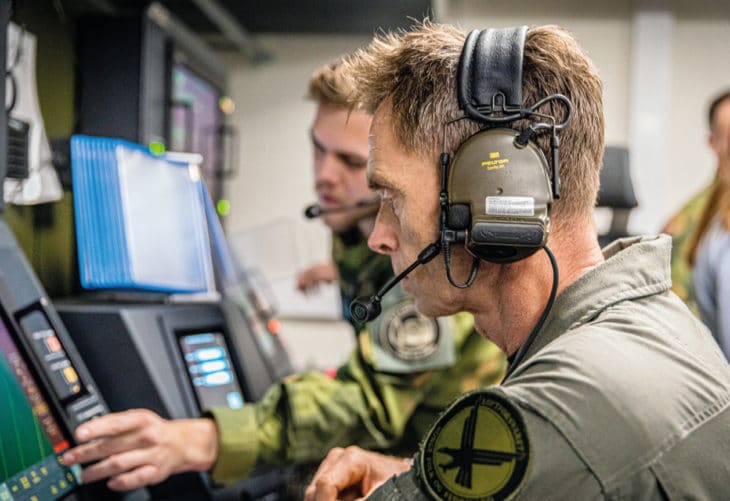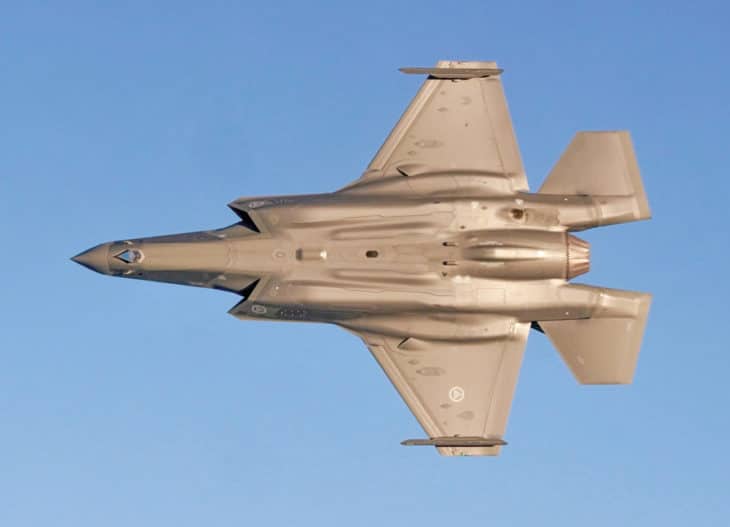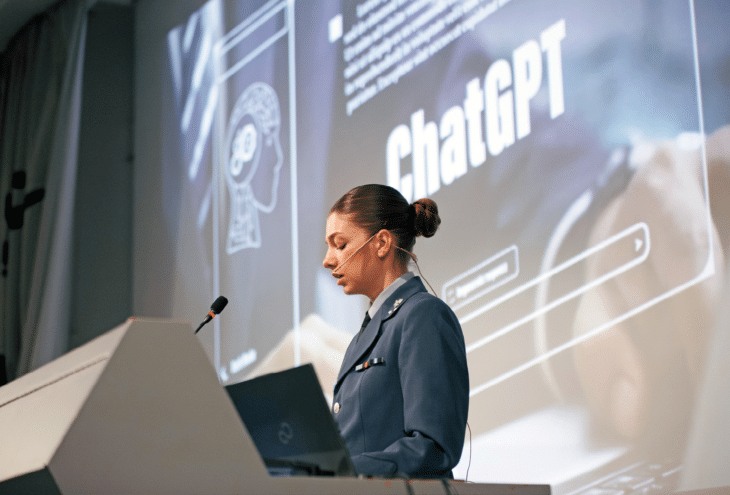Why Russia’s war failed and what it means for NATO air power
The horrific war in Ukraine is a war for the future of Europe. A new Cold War has descended, more dangerous than the previous one when both sides sought to maintain nuclear stability from the 1970s onwards. Arms control regimes were agreed upon, as well as confidence-building measures, and borders in Europe were no longer really under contention.
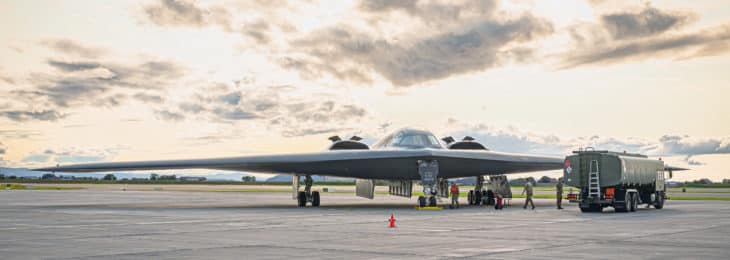
Now, however, the various nuclear weapons treaties have been dismantled and the leader in the Kremlin aims to restore Russia to superpower status and expand the Russian empire with the spheres of influence of old..
So far Russia has not achieved any of its objective. The ongoing attritional war is in no small part the result of the stalemate in the air war, in particular Russia’s failure to pursue, achieve and exploit air superiority. Ukraine’s lack of air superiority and air support in turn undermined the chances for success for its much-anticipated counter-offensive in 2023. Swarms of drones meanwhile roam the low skies over the battlefield, redefining the nature of close air support and dramatically reshaping land warfare tactics and waves of Russian missiles and cheap long-range drones conduct indiscriminate strategic attacks against Ukrainian society.
And Ukraine is not the end of Russia’s revisionist ambitions. Considering Europe’s serious capability shortfalls, and the uncertain shape of the transatlantic relation, it has a brief window to ramp up its deterrence strategy and defence capabilities. While it is unwarranted to draw far reaching conclusions for Western defence policies while this war is ongoing, and acknowledging that the way the war has unfolded owes much to a variety of Russian tactical and operational failures and flawed planning assumptions, the war clearly illuminates what investments Europe will need to prioritize in order to mount a credible deterrence strategy. Restoring and exploiting the qualitative asymmetric advantage Europe has enjoyed in the past three decades is key to establish a credible deterrence strategy. This advantage resides in particular in the air domain.
A 10-day campaign plan
Despite US warnings Russia planned for war, the war surprised and shocked Europe.1 Russia unleashed major war on the European continent. A high paced 10-day “special operation” aimed to create a fait accompli, outpace the West’s ability to generate a political and military response, overwhelm Ukraine’s military and remove Zelensky’s regime. Perceiving the West to be weak and divided, a hunger to restore Russia’s status as superpower merged with an ultranationalist belief in Russia’s unique and superior culture, fears of Western liberal ideas and the conviction that Russia’s security requires regaining its Cold War spheres of influence.2,3
Invading with 150.000-190.000 troops it enjoyed a 3-to-1 advantage in tanks and artillery pieces, all to be accompanied by hypersonic missiles launches, massive cyber-attacks, and swarms of drones.4 Cyber-attacks targeted Ukraine’s transport and communications infrastructure, 1.000 cruise missiles and stand-off weapons hit airfields, military headquarters, and air defense sites,5 while electronic warfare operations temporarily neutralized Ukrainian SAM systems. Air superiority seemed assured with Russia counting on a 10-to-1 advantage in fighter aircraft, assisted by airborne early warning and long-range air-to-air missiles. Meanwhile an air mobile operation swooped into Hostomel airfield near Kyiv in order to secure it and receive transport aircraft loaded with armored vehicles and troops that would connect with the columns of tanks and APCs advancing towards Kyiv from the north and northeast. Victory seemed assured.
Strategic blunder: failing to achieve air superiority
Yet, the advance rapidly turned into an attritional contest due to a surprisingly effective Ukrainian resistance with artillery and anti-tank missiles, stalling Russia’s northern and northeastern armored advances that appeared poorly prepared, with little logistical coordination and lacking tactical combined arms skills. Ukrainian units meanwhile eliminated Russian troops on Hostomel airfield, and made the runway inoperable. By retreating into cities and woods, Ukraine denied Russia the full use of its superiority in armor and artillery.6
Russia also blundered strategically in not achieving air superiority, conduct air interdiction, strategic attacks and provide responsive close air support. After day three, Ukraine succeeded in denying Russia the use of airspace, providing freedom of maneuver for its ground troops and logistics, through effective deployment of mobile air-defense systems.7 Based on American intelligence warnings, those systems, along with fighter aircraft, had been removed from the military airfields known to the Russians. As a result, Russian air and missile strikes hit virtually empty infrastructure. When Russia ceased its electronic jamming operations because these also hampered its own communications, Ukrainian SAMs became operational, which, combined with man-portable air defense systems such as Stingers, caused heavy losses among Russian helicopters and fighter jets.
High loss rates were also due to poor fighter tactics (flying into Ukrainian airspace alone and without a protective escort) and to inadequate coordination with their own ground troops and resulting fratricides. The Russian air force subsequently resorted to launching airstrikes from Russian and Belarusian airspace but shortage of precision munitions and the use of non-guided ammunition dropped from a medium altitude degraded their effectiveness. Close air support missions also were relatively ineffective because the Ukrainian SAM threat forced Russian fighters to apply low-level tactics. Russian troops, from April onwards, therefore operated largely without air support.
Air strikes increasingly targeted cities. While Russian fighters with long range air-to-air missiles remained effective against Ukrainian aircraft near the front lines, the intensity of air operations dropped to about 140 daily sorties, rising to 250-300 around the summer, a small number given the available number of combat aircraft, the length of the front line and the size of Ukraine. As a consequence, Ukrainian ground troops retained freedom of movement and logistical supply lines remained relatively secure. As two Ukrainian officers concluded, the inability to achieve air superiority led to a deceleration and complete paralysis of the ground offensive.8
Fighting for air superiority
On April 9 Putin declared his units would retreat from Kyiv and instead focus on the Donbas. Russian units encircled and pulverized cities such as Mariupol, showing no regard for the law of armed conflict, causing horrific numbers of civilian casualties and committing war crimes in Bucha and Irpin. The last major cities to fall to Russia after prolonged massive artillery barrages and costly urban combat were Severodonetsk, and Lysichansk. The Russian air force meanwhile stepped up the air war. Numerous airstrikes along with long-range missiles, ballistic missiles, and cruise missiles targeted logistical supply lines throughout Ukraine. The strategic impact of this air interdiction operation was minor due to low accuracy, intensity and frequency of the interdiction campaign. But this was also a fight for air superiority as it forced Ukraine to reallocate scarce mobile SAM systems, and while Ukrainian air defense interception score rose to 50-60% in May-June 2022, it also risked depleting its stockpile of air defence missiles.
Winning the air denial contest is a strategic precondition, certainly in light of Russia’s massive waves of missile and drone strikes and its willingness to suffer losses
Above the frontline Russian high-flying fighters lured Ukrainian SAM operators to switch on the systems after which low-incoming SU 24 Fencer and Frogfoots tried to disable them. Other fighters fired anti-radiation missiles at Ukrainian SAM radars as did artillery, supported by reconnaissance drones. Russian Frogfoots sometimes exploited the gaps created in air defense cover and penetrated up to 100 km behind Ukrainian lines. Ukraine applied the same tactic, especially from August onwards when it could use HIMARS systems. In the southern Kherson Oblast several S-400 systems were thus disabled. Ukraine also started to operate with Mig-29s modified to launch Western HARM anti-radiation missiles. Yet neither camp succeeded in actually creating a permanent hole in the enemy frontline air defenses.
In Summer 2022, while struggling in the costly defensive in the Donbas, Zelensky promised Ukraine would soon start an offensive now that Western materiel was coming in, an offensive directed at the city of Kherson. Scores of HIMARS salvo’s struck Russian command centers and ammunition depots well behind the southern frontline, Russian SAM sites were hunted south of Kherson city and bridges were destroyed, all confirming the perception that Kherson was indeed Ukraine’s objective. Russia subsequently transferred 20.000-30.000 troops from the Kharkov area to help defend Kherson. Next, in a surprise attack against the thinned defensive lines, Ukrainian units liberated Kharkov province. Kherson followed in November after Russia, recognizing that, with the bridges over the Dnepr River dysfunctional, logistical support for the units there was increasingly problematic, withdrew its forces to the left bank of the river.9
‘Close the Skies’
Zelensky constantly stressed that air defence was one of his primary concerns. In February 2022 Zelensky had pleaded for a no-fly zone, later he frequently begged for the supply of Western fighter jets. Following Russia’s intense missile and drone attacks in Fall 2022 against Ukraine’s energy sector he summoned Western leaders to help “Close the skies” in January 2023, admitting Ukraine faced a dwindling stockpile of air defence missiles and number of fighter aircraft.
Western leaders decided to supply air defence systems including modern Patriots, NASAM and German IRIS-T. In August 2022 the Netherlands and Denmark also suggested delivering F-16s and train Ukrainian pilots and technicians, which was agreed by the US in July 2023.10 The UK and France provided Storm-shadow long range air launched missiles, signaling the Kremlin’s hope to outlast Western support was futile.
In Winter 2023 Ukraine’s air defences remained instrumental in keeping Russian fighters away from the frontline. Having suffered between 60-80000 casualties Russia’s winter offensive stalled and failed to gain much territory. Lack of air superiority however also hampered Ukraine’s Summer counter-offensive against Russia’s well developed and heavily mined Suriviki defensive lines. Unable to prepare the battlespace with air interdiction and conduct cloase air support as Western doctrine proscribes, Ukraine’s armored assaults stranded in the minefields which were covered by Russian anti-tank systems and artillery.
In December 2023 Russia once again intensified its drone and missile campaign, this time against cities and military facilities nearby. While Ukraine continued to intercept an impressive percentage, it also forced it to ration its air defence missiles, and by February 2024 this inevitably resulted in gaps in air defence coverage at the Donbas frontline. Russia however continued to suffer from Ukraine’s smart air defence tactics, which managed to down two vital and scarce A-50 AEW/C2 aircraft and multiple fighters, effectively pushing Russian air power further away from the frontline.
The war and European security
Russia has reminded the West that conventional military power is still major currency in international politics.11 Indeed, the war amounts to a renewed acquaintance with the Russian strategic culture of total war.
Russia has warned its appetite is not limited to Ukraine. While Russia can currently ill afford a direct confrontation with NATO, it could reconstitute its armed forces within a timespan of just a couple of years.12 This explains why Finland and Sweden rapidly applied for membership, Poland will increase defense spending to 4% of GDP and the Baltic States called for a more credible deterrence strategy. Already before 2022 many doubted NATO could successfully defend the territory of its most exposed members with the military resources then available.13 The large numbers of Russian surface-to-surface missiles and SAM systems in Kaliningrad, among others, posed a major threat to the thin line of Enhanced Forward Presence (EFP) units in the Baltic states. As a French analyst put it, without air superiority, the EFP units are not tripwire but sitting ducks.14
In June 2022, in its new Strategic Concept, NATO thus declared its intent to replace this deterrence by punishment strategy by a Forward Presence strategy, in short, a deterrence by denial strategy. In the words of that ambitious concept:
“We will significantly strengthen our deterrence and defence posture to deny any potential adversary any possible opportunities for aggression. To that end, we will ensure a substantial and persistent presence on land, at sea, and in the air, including through strengthened integrated air and missile defence. We will deter and defend forward with robust in-place, multi-domain, combat-ready forces, enhanced command and control arrangements, prepositioned ammunition and equipment and improved capacity and infrastructure to rapidly reinforce any Ally, including at short or no notice.15”
What deterrence requires
When viewed through the prism of this strategy, clear pointers emerge. Just like conventional deterrence by denial during the “old” Cold War it is essential that stopping power is strengthened so that an aggression can be halted at the border, and, if necessary, to reconquer lost territory. To that end NATO needs to address the demands of industrial style war16, and exploit as well as solve the causes of the setbacks on both sides: a renewed dominance of the defense over the offence.
The inability to achieve air superiority led to a deceleration and complete paralysis of the ground offensive
On both sides extensive Anti-Access/Area-Denial capabilities in the form of high numbers of SAM and EW systems had a strategic impact on the evolution of the war, downing missiles, drones, helicopters and 4th generation fighters, while drones and artillery wreaked havoc among land forces, precluding attacks with massed armored formation. Defence is stronger than offense, provided sufficient numbers of systems and ammunition is available and high levels of attrition can be absorbed. This portends a break with the recent Western military experience in which the offence had become dominant due to tactical, operational and technological superiority, in particular in the air domain, and land forces could as a result operate swiftly with relative low levels of attrition. Presently a quick Russian incursion a few kilometers across a Baltic border would create a highly problematic fait-accompli situation for NATO. Russia could subsequently rely on its ability to sustain a subsequent attritional war longer than the West, whose capabilities will quickly be exhausted. The new Forward Presence strategy should prevent such a scenario.
Winning the air war
Enhancing land power capabilities is certainly essential, and eastern European states are therefore already investing in tanks, long range tube- and rocket artillery systems. Quantity in weapon systems and related ammunition stocks, military industrial capacity, spare parts, redundancy, societal resilience; these are all strategic qualities, in addition to high quality weapons. To these traditional capabilities, armed forces now must add massive numbers of tactical offensive and reconnaissance drones.17 Yet that is not sufficient.
Winning the air denial contest is a strategic precondition, certainly in light of Russia’s massive waves of missile and drone strikes and its willingness to suffer losses. NATO needs to restore and exploit asymmetry on an operational and strategic level. As both Russia and Ukrainian experiences once again demonstrate, not winning in the air guarantees failure. For a credible deterrence strategy, NATO must guarantee and exploit air superiority to defend its troops and infrastructure against onslaughts of air strikes, artillery barrages, drones, hypersonic-, cruise- and ballistic missiles, just like air power underwrote the credibility of NATO’s conventional deterrence during the last two decades of the Cold War.
Numerically inferior, it was expected that, after an intense battle with the first echelon of the Warsaw Pact land forces, the belt of NATO army corps would eventually be defeated by the second and third echelons in a costly attritional slug fest. In the air power domain however a qualitative advantage accrued from the introduction of the 4th generation fighters and bombers (F-15, F-16, F-18, Tornado, B-1) with precision weapons, cruise missiles and large numbers of SEAD assets and electronic warfare capabilities. This offered a real possibility to severely degrade the second and third Warsaw Pact echelons well before they could reach the frontline. With the impressive continuous belt of integrated air defense systems Russian air attacks could be parried.
To that end, as two studies concluded before the war, NATO needs to address “critical capability shortfalls” in the area of “A2/AD, stand-off munitions, SEAD, Destruction of Enemy Air Defenses (DEAD), Enhanced ground Based Air Defense, Theater Ballistic missile Defense, Electronic Warfare, modernized and hardened C4ISR, and 5th Generation combat aircraft”.18 This amounts to (1) developing credible NATO A2/AD capabilities along the Eastern border and in NATO’s rear area, while at the same time (2) providing the offensive means to punch through Russia’s A2/AD systems and strike Russian targets at and behind the frontline. This is a precondition for restoring the ability to protect ground troops on the eastern flank against missile and air attacks and, if necessary, to provide essential ‘stopping power’ at an early stage by means of Air Interdiction and Close Air Support, and to subsequently enable offensive ground operations.
A RUSI report emphasized, fixing this deficiency is urgent.19 Because “The only alternative – accepting that air superiority is not attainable over future battlefields contested by Russia or another adversary nation – would require a total redesign of NATO’s joint forces towards a force that relies on massed artillery, armor and infantry as the core of its fighting power, rather than air-delivered firepower. That alternative implies demographic, political and financial costs that far outstrip the costs of regenerating warfighting credibility for NATO air forces.”20 Restoring NATO’s operational and strategic asymmetries – its air power advantage – is essential if NATO wants its Forward Presence strategy to credibly signal to Russia that military aggression has no chance of success. However, while until recently Europe could rely on the US to contribute with key air power capabilities to compensate for Europe’s shortfalls, that is no longer guaranteed, a clear message that in order to effectuate the new deterrence strategy, investing in Europe’s air forces is key priority.21
